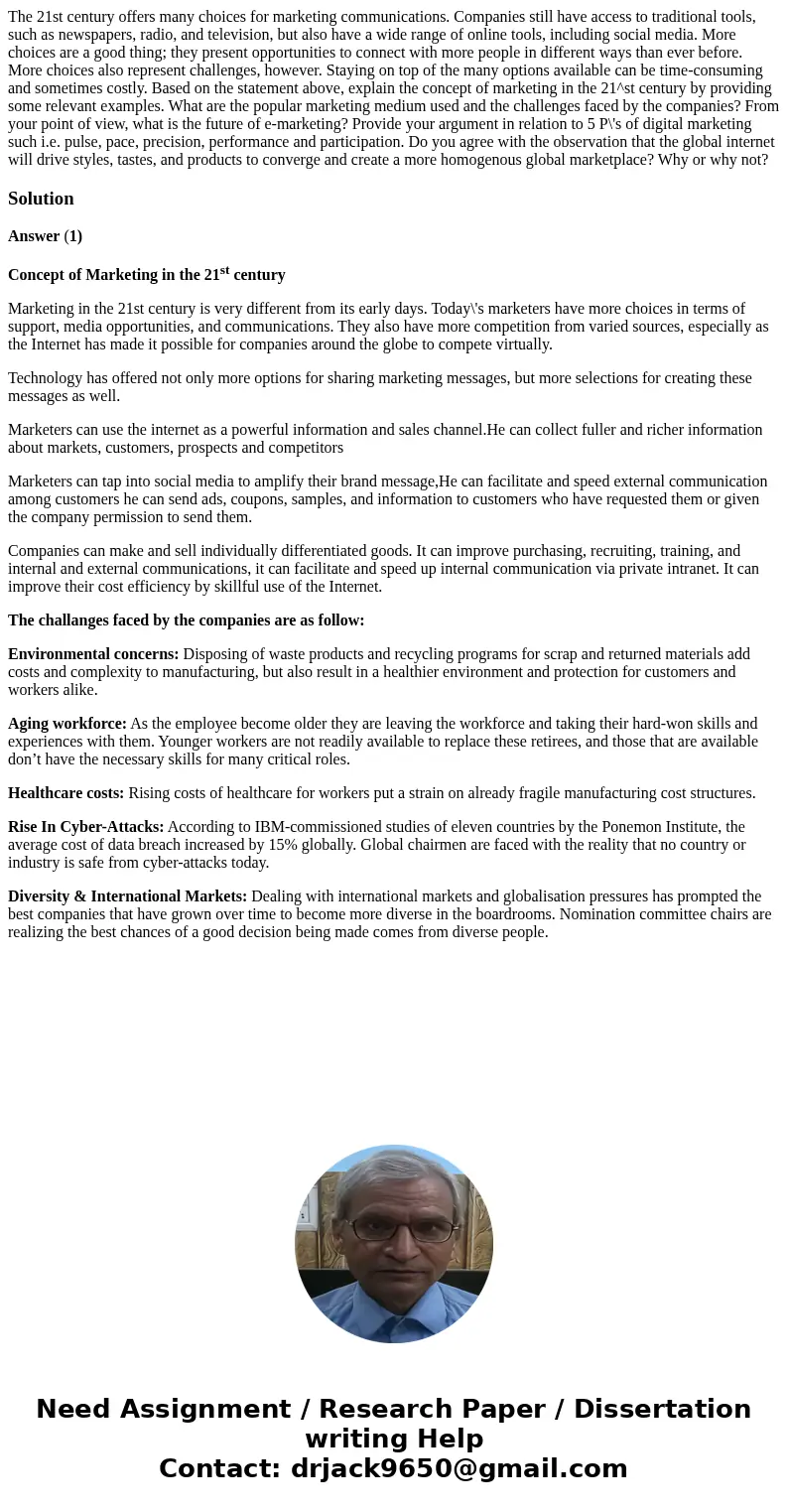The 21st century offers many choices for marketing communica
Solution
Answer (1)
Concept of Marketing in the 21st century
Marketing in the 21st century is very different from its early days. Today\'s marketers have more choices in terms of support, media opportunities, and communications. They also have more competition from varied sources, especially as the Internet has made it possible for companies around the globe to compete virtually.
Technology has offered not only more options for sharing marketing messages, but more selections for creating these messages as well.
Marketers can use the internet as a powerful information and sales channel.He can collect fuller and richer information about markets, customers, prospects and competitors
Marketers can tap into social media to amplify their brand message,He can facilitate and speed external communication among customers he can send ads, coupons, samples, and information to customers who have requested them or given the company permission to send them.
Companies can make and sell individually differentiated goods. It can improve purchasing, recruiting, training, and internal and external communications, it can facilitate and speed up internal communication via private intranet. It can improve their cost efficiency by skillful use of the Internet.
The challanges faced by the companies are as follow:
Environmental concerns: Disposing of waste products and recycling programs for scrap and returned materials add costs and complexity to manufacturing, but also result in a healthier environment and protection for customers and workers alike.
Aging workforce: As the employee become older they are leaving the workforce and taking their hard-won skills and experiences with them. Younger workers are not readily available to replace these retirees, and those that are available don’t have the necessary skills for many critical roles.
Healthcare costs: Rising costs of healthcare for workers put a strain on already fragile manufacturing cost structures.
Rise In Cyber-Attacks: According to IBM-commissioned studies of eleven countries by the Ponemon Institute, the average cost of data breach increased by 15% globally. Global chairmen are faced with the reality that no country or industry is safe from cyber-attacks today.
Diversity & International Markets: Dealing with international markets and globalisation pressures has prompted the best companies that have grown over time to become more diverse in the boardrooms. Nomination committee chairs are realizing the best chances of a good decision being made comes from diverse people.

 Homework Sourse
Homework Sourse